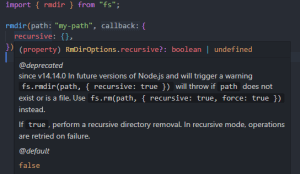Do your developers spend more time wrestling with the complexities of Salesforce Commerce Cloud (SFCC) than crafting innovative features for your online store? Is your team bogged down by Salesforce’s limitations and steep learning curve, hindering their agility and creativity? If this sounds familiar, it’s time to explore headless commerce. Headless commerce unlocks a new level of efficiency and flexibility for development teams, allowing them to focus on what they do best: building a seamless and engaging customer experience. This approach streamlines workflows, reduces reliance on SFCC specifics, and allows developers to leverage their expertise in familiar front-end frameworks. The result? Faster development cycles, a more competitive digital experience, and a development team excited to push the boundaries of e-commerce.
Reducing Reliance on Salesforce Commerce Cloud Knowledge
Traditional commerce platforms like SFCC follow a monolithic architecture, where the front-end (the user interface) and the back-end (data and functionalities) are tightly coupled. This means changes to one side often impact the other, requiring developers to have a deep understanding of both. Headless commerce, on the other hand, adopts a decoupled approach. Here’s how it breaks free from limitations:
- Decoupling the Layers: In headless commerce, the front-end is separated from the back-end (SFCC) through APIs (Application Programming Interfaces). APIs act as messengers, allowing developers to request and receive data and functionalities from SFCC without needing to manipulate the platform itself. This separation frees developers from the intricacies of SFCC and empowers them to focus solely on building the front-end experience.
- Focus on Front-End Expertise: With headless commerce, developers can leverage their existing skillset in popular front-end frameworks like React, Vue.js, or Angular. Since the front-end is no longer an extension of SFCC, developers can code in familiar languages and utilize the latest advancements in front-end development. This not only reduces the learning curve but also allows them to build more dynamic and interactive user interfaces.
- Customization: Headless commerce enables developers to design and build custom user interfaces by removing the limitations imposed by the SFCC platform. Developers are no longer limited by pre-defined templates or functionalities. Instead, they have the freedom to design and build custom user interfaces tailored to your specific needs and brand identity. This flexibility allows you to create a truly unique and differentiated shopping experience for your customers.
Faster Development Cycles With Headless Commerce
Headless commerce embraces a modular architecture, a key factor in accelerating development cycles:
- Independent Development and Deployment: By decoupling the front-end from the back-end (SFCC), headless commerce allows for independent development and deployment. Developers can work on the front-end experience without needing to touch the back-end systems. This means front-end updates can be developed, tested, and deployed independently, significantly reducing overall development time.
- Agility and Flexibility: Headless commerce fosters a more agile development environment. The ability to make independent front-end changes translates to faster iteration cycles. Developers can experiment with new features, test different UI designs, and react to market trends quickly. This agility allows you to continuously refine your online store and stay ahead of the competition.
- Faster Time-to-Market: With faster development cycles and independent deployments, headless commerce helps you bring new features and functionalities to market quicker. This agility allows you to capitalize on market opportunities and keep your customers engaged with fresh and innovative experiences. Reduced development time also translates to cost savings, allowing you to invest those resources in further optimizing your e-commerce strategy.

Dive deeper into headless commerce development. Discover our comprehensive documentation for developers.
Freedom to Leverage a Custom Tech Stack
Headless commerce breaks the mould of traditional, one-size-fits-all platforms. Instead of being confined to a pre-defined technology stack, you gain the freedom to choose the right tools and technologies based on your specific project requirements and your development team’s expertise. This ensures you’re utilizing the most efficient and performant technologies for your project.
With headless commerce, you have the freedom to select tools based on project requirements and your team’s expertise. Your development team might excel in React development, so you can leverage React for the front-end. Similarly, you can choose a headless CMS platform that seamlessly integrates with your existing infrastructure and workflows.
Headless commerce unlocks the potential of popular front-end frameworks like React, Vue.js, or Angular. These frameworks offer a wealth of features and a vibrant developer community, empowering you to build dynamic and interactive user interfaces that deliver exceptional user experiences. Additionally, you can streamline integration with API management solutions, ensuring smooth communication between the front-end and SFCC. Let’s take a closer look at APIs.
The Role of APIs in Headless Commerce Implementations
APIs (Application Programming Interfaces) serve as the bridge between the front-end and the back-end (SFCC). Imagine them as messengers, carrying requests and responses between the two sides. Developers leverage APIs to access and utilize essential data and functionalities from SFCC to power the front-end experience.
These APIs act as gateways to a treasure trove of information. Product data, customer details, shopping cart functionality – all these can be accessed by the front-end through well-defined APIs. This allows developers to build a dynamic and data-driven user experience without needing direct access to the complexities of SFCC itself.
Standardized APIs are the cornerstone of smooth integration in headless commerce. These standardized protocols ensure that any front-end application, regardless of the chosen framework, can seamlessly communicate with SFCC. This not only simplifies development but also opens the door to integrating various tools and services with your headless commerce platform. Imagine incorporating a best-in-class payment gateway or a powerful marketing automation tool – standardized APIs make such integrations a breeze. Furthermore, they empower developers to build custom functionalities tailored to your specific needs, ensuring a truly unique and differentiated online store.
Ready to experience the transformative power of headless commerce?
Sign up for a free trial of our headless commerce platform today! This trial will give your development team a hands-on opportunity to explore the decoupled architecture and build a custom front-end experience.
The Benefits of Automation Tools
Headless commerce is amazing but it can be made even better thanks to automation tools. These tools act as a force multiplier, allowing developers to achieve more in less time.
Automation tools can significantly reduce the time spent on repetitive tasks. Imagine automated processes for deployment, where updates are seamlessly pushed to production with minimal manual intervention. Similarly, automated testing tools can run comprehensive test suites in minutes, freeing developers from the tedium of manual testing. This reduction in manual workload translates to faster development cycles and quicker time-to-market for new features.
What is more, manual processes are prone to human error. Automation tools, however, eliminate this risk by performing tasks with consistent accuracy. For instance, automated testing tools can meticulously identify bugs and regressions, ensuring a higher-quality codebase.
There is a multitude of tools that already exist for development automation. These popular automation tools cater to various development stages. For deployment, tools like Jenkins or GitLab CI/CD can automate the build, test, and deployment process. Testing frameworks like Cypress or Selenium automate test execution, while code review tools like CodeClimate or SonarQube streamline the code review process with automated code analysis.
By eliminating repetitive tasks, automation tools empower developers to focus on what truly matters – innovation. The time saved from manual processes can be channeled into building new features, experimenting with cutting-edge technologies, and crafting a truly exceptional user experience for your customers.
Headless commerce unlocks a new era of agility and innovation for e-commerce businesses. By streamlining workflows, reducing reliance on SFCC specifics, and enabling greater flexibility with a custom tech stack, headless commerce empowers your development team to focus on what they do best: building a seamless and engaging customer experience.
The benefits extend far beyond the development team. Headless commerce translates to faster time to market for new features and functionalities. Improved developer productivity leads to reduced development costs. Most importantly, you gain a competitive digital experience that keeps your customers engaged and coming back for more.
